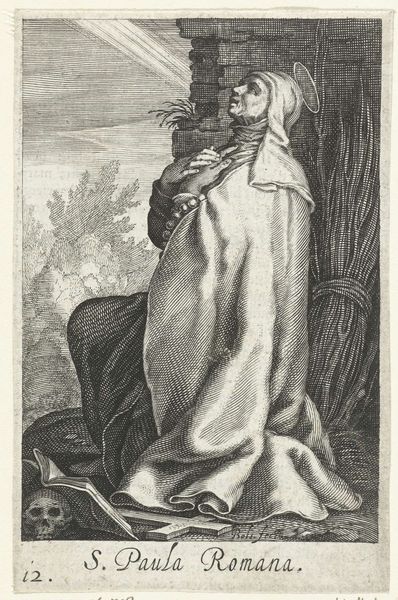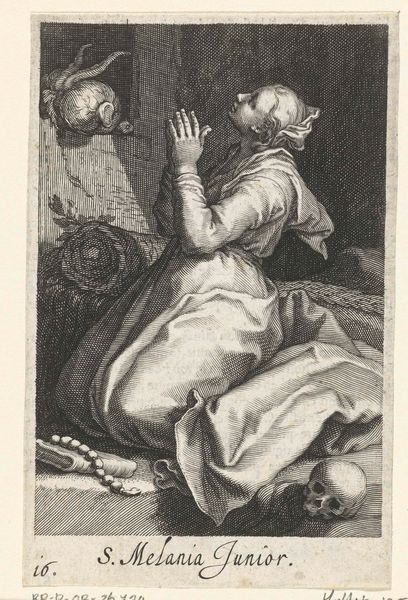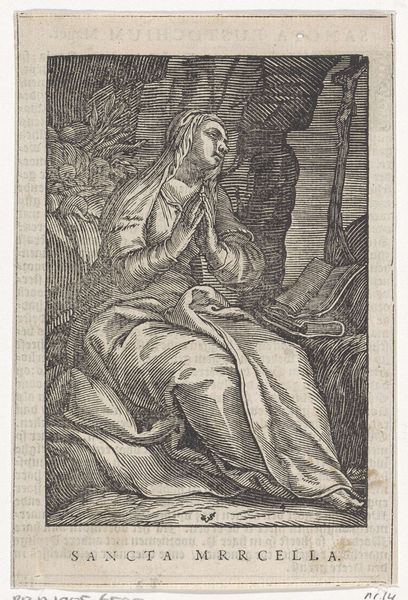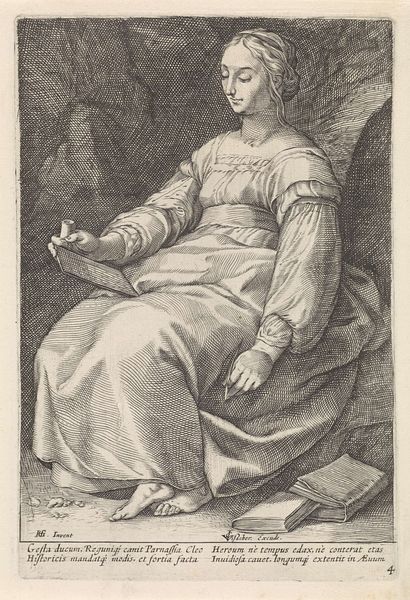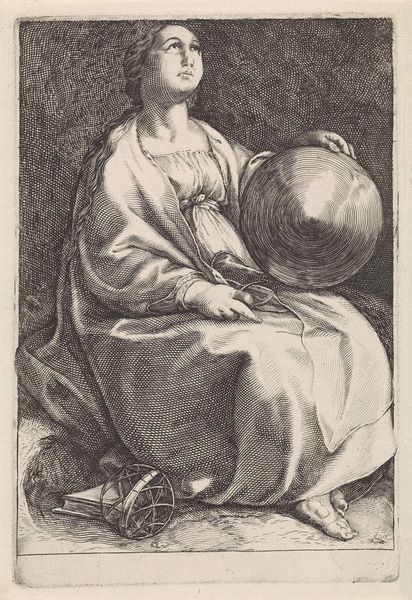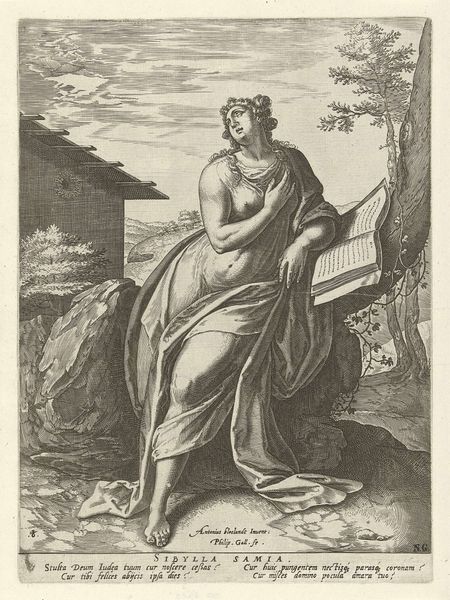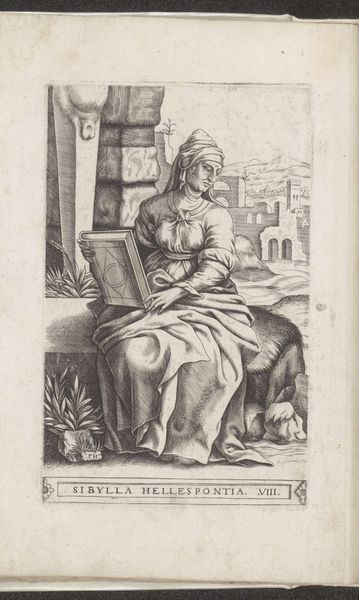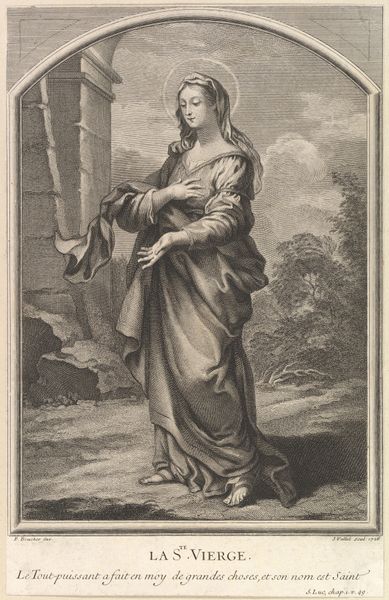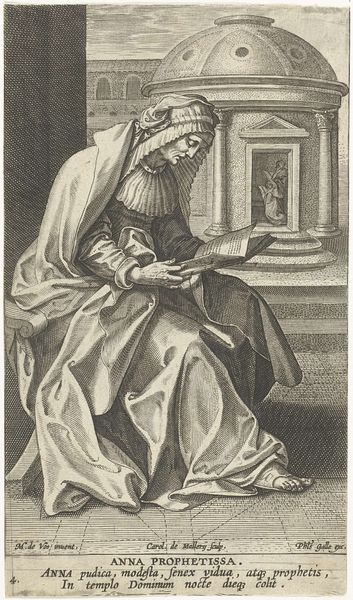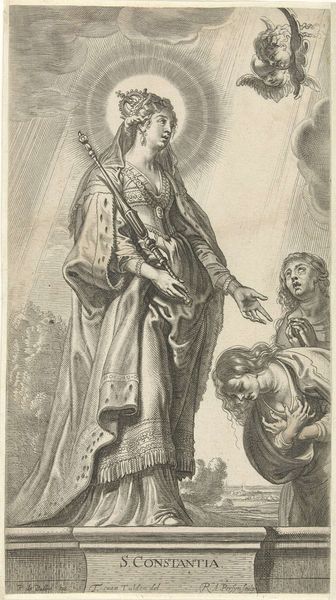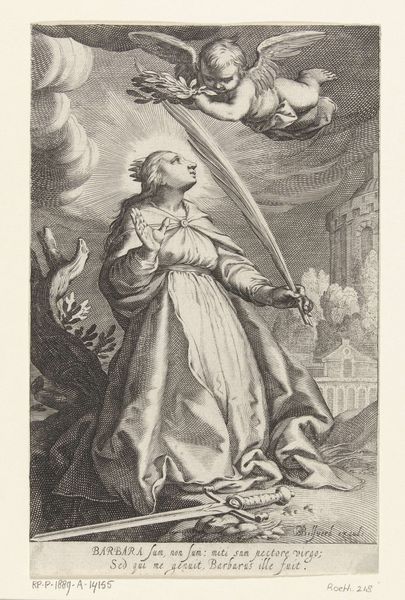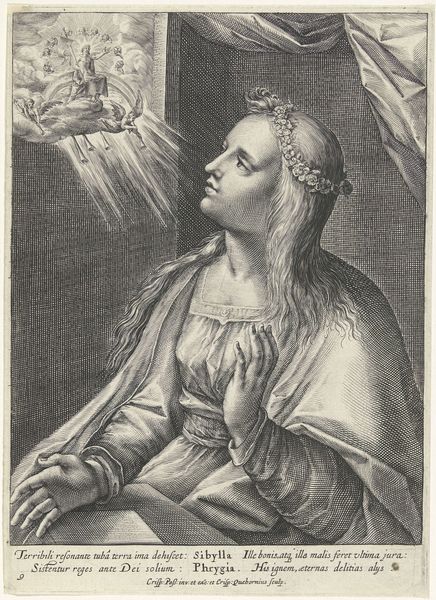
engraving
#
portrait
#
baroque
#
old engraving style
#
caricature
#
history-painting
#
engraving
Dimensions: height 143 mm, width 93 mm
Copyright: Rijks Museum: Open Domain
Curator: This engraving captures Saint Marcella of Rome as a hermit, rendered by Boëtius Adamsz. Bolswert sometime between 1590 and 1619. Editor: My first impression is a quiet intensity. The figure is shrouded, almost blending into the shadowy, cavernous space, which definitely adds to the drama, a touch Baroque perhaps? Curator: The Baroque influence is evident, yes, particularly in the dramatic use of light and shadow to emphasize her devout introspection. Look at the crucifix and the book; symbols that resonate deeply within a religious framework of self-sacrifice and divine communion. The folds of her garment draw the eye. Editor: It’s also interesting how Bolswert places her in this wild, almost theatrical setting. The details create a kind of… discomfort. The gnarled tree trunks, that pile of odd vegetables next to her… all seem at odds with the tranquility she’s presumably seeking. Is there some commentary here on the difficulty of escaping earthly life? Curator: Exactly. Marcella chose asceticism, renouncing wealth and social status, a powerful act that would have been culturally charged. She transformed her own home into a monastery! The landscape reflects that internal transformation; a conscious severing of ties, and a grappling with earthly temptations represented by these almost surreal features around her. Those “vegetables” might allude to more primitive ways of sustaining herself away from worldly comforts, reflecting her resolve. Editor: So, it becomes a story not just of faith, but of social and psychological rebellion? How interesting that she's surrounded by food while in denial of material concerns... Also, considering Rome’s intricate power structures, a noblewoman essentially “opting out” surely made a statement. Did her choice impact how women in religious roles were perceived at the time? Curator: Without question. Marcella’s story offered a paradigm shift and empowered women seeking agency through religious devotion. Bolswert’s work acts as a visual record of the complexities, and a political challenge. Editor: It reminds us how even seemingly quiet acts of devotion could be interpreted as powerful social gestures, shaping the landscape of belief. Thank you for sharing your insights. Curator: My pleasure, considering her choices opens new angles of perspective on Rome and its women in a transformational moment of history.
Comments
No comments
Be the first to comment and join the conversation on the ultimate creative platform.
